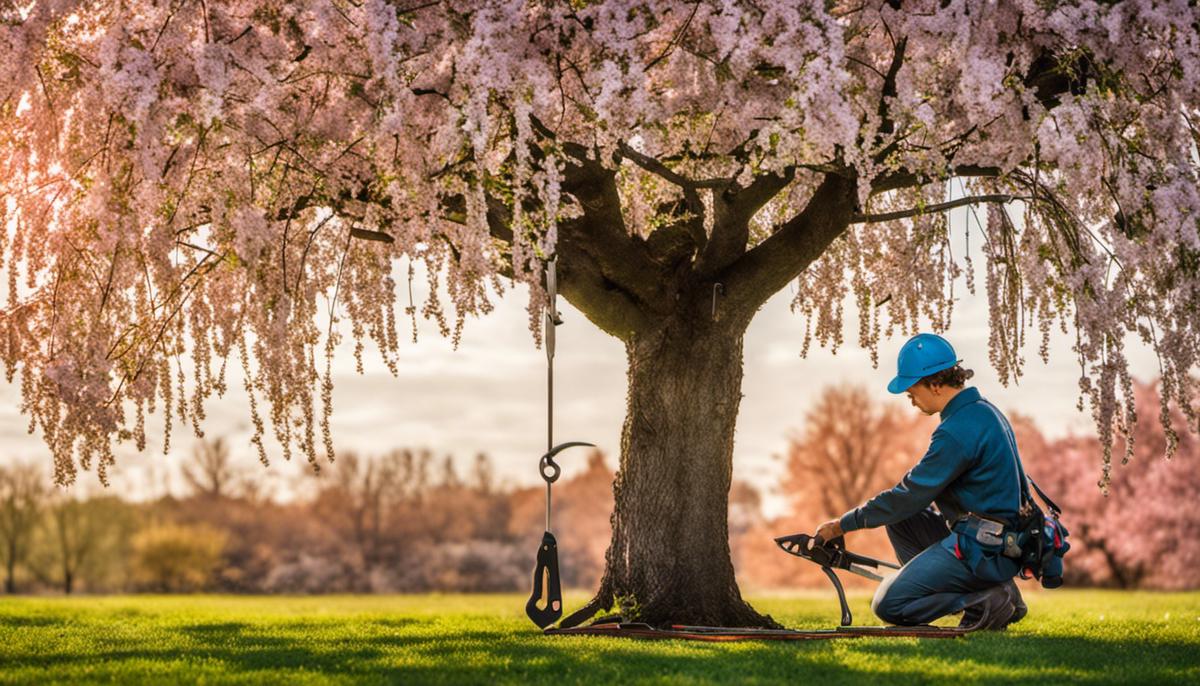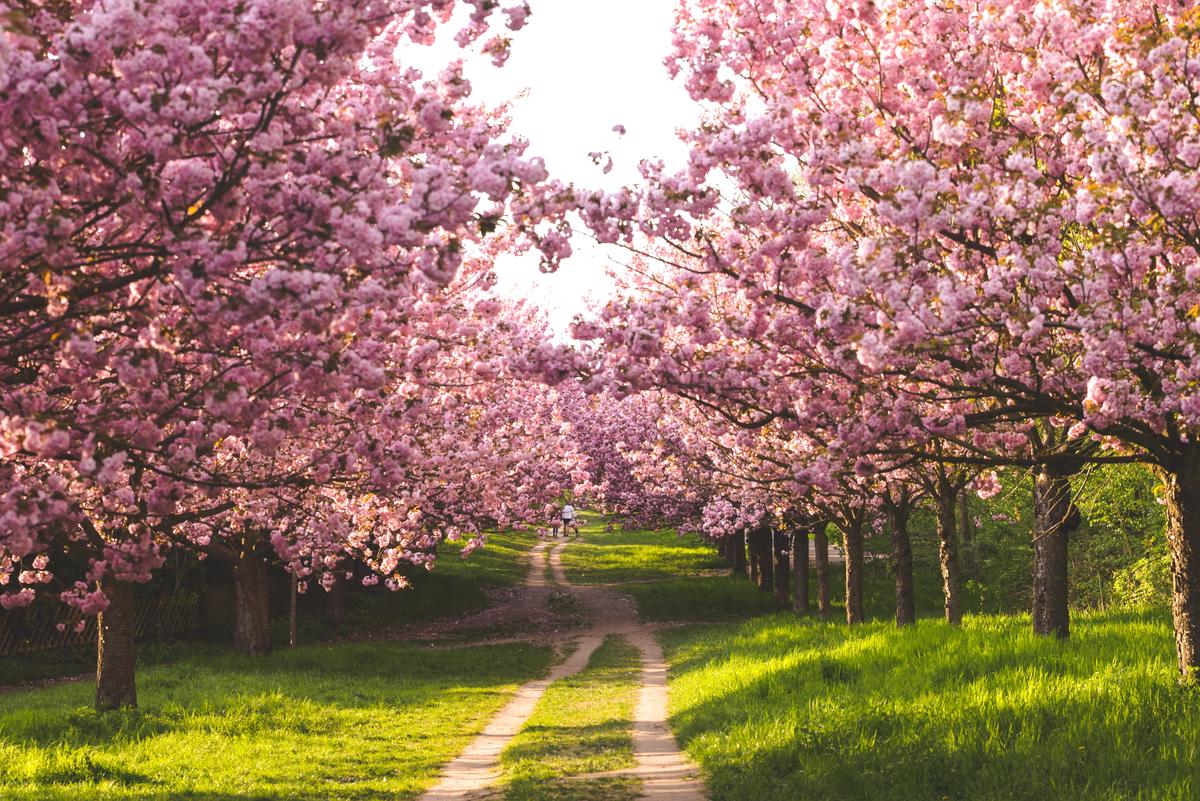Mastering Weeping Cherry Tree Pruning

Pruning is an integral aspect of maintaining a weeping cherry tree, enhancing both its health and aesthetic appeal. This guide aims to provide you with essential knowledge on when to prune your tree, how to identify branches that demand attention, and what techniques to use for successful pruning. The timing of the pruning process plays a crucial role in determining the tree’s recuperating ability post-pruning. Moreover, the ability to single out the branches that are diseased, dead, or excessively grown, is instrumental in preserving the stunning weeping shape of the tree. Lastly, understanding and practicing proper pruning techniques will help you counteract tree damage and prevent potential spread of diseases.
Understanding When to Prune
Title: Timely Trims: Unleashing the Art of Pruning Weeping Cherry Trees
In the mesmerizing world of tree care and gardening, just about nothing compares to the enchanting weeping cherry tree. With its cascades of silky pink blossoms in the spring, therapeutically swaying branches in the wind, and alluring presence all year round, it’s no wonder these trees are coveted by enthusiasts and beginners alike. However, to maintain their charm, weeping cherry trees require timely and thorough pruning, a practice that is both nurturing and an art form.
Entering the realm of tree pruning might seem intimidating, but fear not, it’s an experience filled with elements of surprise and joy. Now, let’s uncover the answer to the big question: When is the ideal time to prune a weeping cherry tree?
A time etched in the heart of every ardent tree lover is late winter or early spring, specifically before the emergence of new blooms. This time frame is ideal because the tree is still dormant. It does not only minimize stress on the tree but also allows better visibility of the tree’s structure, making the pruning process relatively effortless and efficient.
The magic lies in the tree’s dormancy period. Pruning during this time reduces the risk of disease and pest infestations, as these menaces are less active in cooler temperatures. Furthermore, the tree will be ready to burst forth with new growth once it exits dormancy, aiding in the quick healing of pruning wounds.
However, there’s a noteworthy exception to the rule: removing damaged, dead, or diseased branches. This is a year-round job. It’s crucial to trim these branches promptly, irrespective of the season, to maintain the overall health and aesthetic of the tree. Such pruning prevents the disease from spreading and keeps the tree’s energy focused on flourishing rather than combating illness.
Now that the timing is sorted, it’s essential to remember a few pruning tips. Always make sure to sterilize the pruning tools before use to prevent the spread of diseases. Begin by carefully removing all the dead or damaged branches first, followed by any crossing or rubbing branches. Pruning should encourage the tree’s natural habit and enhance its cascading effect. Use sharp tools to prevent causing unnecessary injury to the tree and remember, less is more.
Pruning is an integral part of maintaining the health and beauty of a weeping cherry tree. Not just a task, but a dialogue with Mother Nature herself, it reassures the tree that the love is mutual. Remember, it’s not just about the act, but the timing is equally significant. Happy pruning!

Identifying Branches for Pruning
Identifying the Right Branches: Your Guidance to Pruning Weeping Cherry Trees
No question about it: effective pruning is the key to maintaining the splendor of your weeping cherry tree. The focus now is on how to identify which branches are due for a snip, for this task also takes precision and skill.
First and foremost, your gaze must scan the overall form of the tree. The attractive drooping silhouette of a weeping cherry is its defining characteristic. If some branches are not upholding this quintessential shape due to irregular growth patterns, they should be first in line for pruning. Remember, the desired look is an elegantly cascading waterfall of delicate blossoms, not an unruly wave in a stormy sea.
Next, direct your attention to broken branches. Despite their romantic facade, weeping cherries are sturdy, and a broken branch is undoubtedly an abnormality that needs immediate action. Leaving these wounded branches on the tree can lead to severe and sometimes irreversible damage.
Similarly, branches that show signs of infection or pests are pruning priorities. Symptoms such as off-color bark, abnormal growths, or a generally unhealthy aspect can all suggest a problem. It’s best to remove these troublemakers promptly to prevent a potential disease from spreading throughout the tree.
Lastly, but equally important, consider the principle of thinning. Weeping cherry trees thrive when sunlight and air circulation can reach all parts of the tree. If some branches are crossing over or tangling with others, they are impeding this valuable exposure. By removing these interfering branches, you’re promoting a healthier and more vibrant tree.
Consider yourself equipped with the knowledge required for identifying which branches need to be pruned. Grab those sharp, clean pruning shears and embark on this journey of enhancing the health and beauty of your beloved weeping cherry tree. Remember, it’s less about following set rules and more about understanding and responding to the unique needs of your individual tree. Happy pruning!

Proper Pruning Techniques
Embarking on the task of pruning a weeping cherry tree effectively relies on a blend of science, art, and intuition. Knowing how to shape the tree’s natural drape demands more than a few snips here and there. It’s about listening to the tree and observing it as a whole.
Developing a keen eye for the tree’s structure is pivotal. It’s essential to be vigilant, spotting wayward or overgrown branches looking to break free from the tree’s cascading profile. Notice if weight from these haphazardly growing branches threatens to snap delicate limbs. Act promptly to trim these outliers, steering the tree back to its serene, weeping shape.
Weeping cherry trees are as individual as humans, and their growth can lean towards the irregular. Embrace this, and work with the tree’s uniqueness, rather than against it. You are the sculptor, and the tree – your natural medium. Encourage it to develop a shape that is graceful, balanced, and above all else, natural.
Also, understand that broken branches, if undetected, could pose a serious threat. They can leave the tree vulnerable to diseases and pests. Quick removal of broken or split branches helps maintain the tree’s overall health.
Don’t underestimate the importance of good sunlight and air circulation. These are vital for the overall health and growth of the tree. Strategically prune clusters of branches that might be crowding one another, shadowing the interior and stunting its growth. By thinning these out, the tree can channel energy more efficiently towards new growth. Plus, this allows more sunlight to penetrate its leafy veil, fostering healthy foliage and vibrant blooms.
Another critical dimension of effective pruning is understanding the unique needs of each tree. A keener eye might spot the early signs of an infestation or a disease – unusual markings on leaves or a sudden droopiness. In such cases, seeking professional advice or swift removal of affected branches can save the tree.
Finally, patience and consistency is key. It’s not unusual to find eager hobbyists over-pruning in their zest. Remember, every cut is a wound to the tree, so make each one count. A few well-considered snips can often have a greater impact than an abundance of random cuts. Treat it as a nurturing journey rather than a one-time job focused on instant effects. The tree will undoubtedly appreciate the care and respond with healthier, more robust growth and extraordinary blossoms for years to come.
In this journey of maintaining a weeping cherry tree, you’re doing more than pruning branches. You’re cultivating a deeper connection with nature, mastering a living art form, and understanding the rhythmic balance of life and growth. Creating something beautiful is not a stretch but a patient endeavour. Enjoy the process and reap the blooming rewards. Each pruning session will reinforce this relationship and the joy in it.

The proficiency of pruning your weeping cherry tree is a significant factor for its longevity and visual appeal. Identifying the ideal time to prune, recognizing which branches require cutting, and applying proper techniques all contribute to this complex art and science. Ultimately, the goal is to retain the tree’s natural weeping shape while maximizing its health. If carried out correctly, pruning is more than just maintenance; it’s a way of reinvigorating your tree, stimulating growth and ensuring the continuance of its arresting beauty for years to come.



